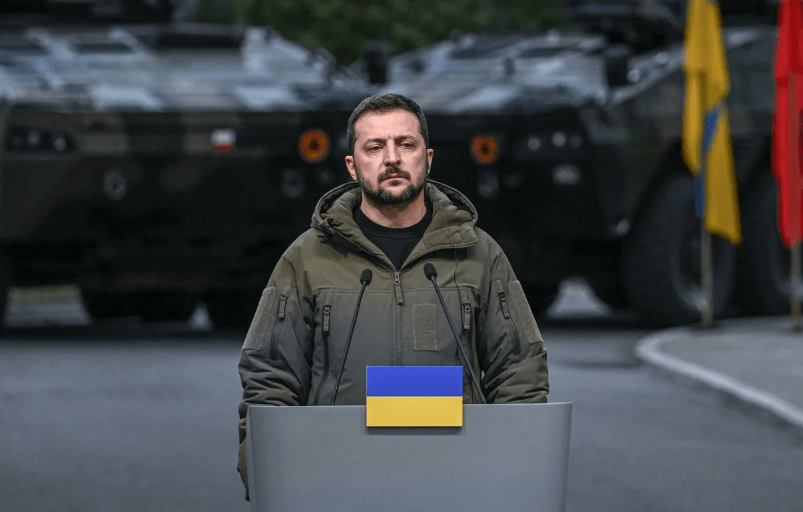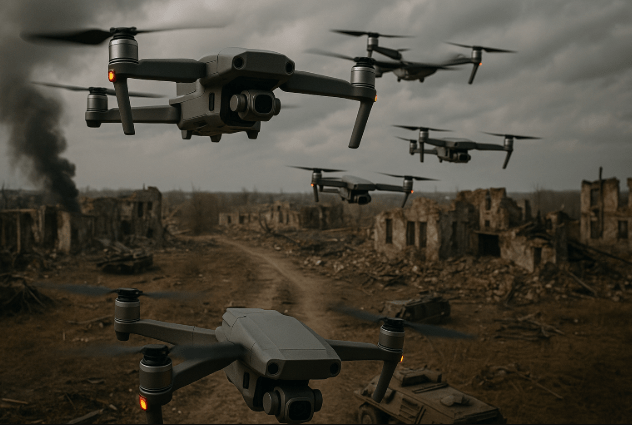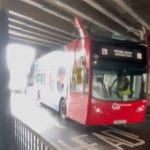Russia is rapidly closing the gap with Ukraine in drone warfare, with significant backing from China. Despite official claims to the contrary, Chinese companies are reportedly supplying Russia with essential components needed for advanced drone development.
“Chinese manufacturers provide them with hardware, electronics, navigation, optical and telemetry systems, engines, microcircuits, processor modules, antenna field systems, control boards, navigation.
They use so-called shell companies, change names, do everything to avoid being subject to export control and avoid sanctions for their activities,” said Oleh Aleksandrov, spokesperson for the Ukrainian Foreign Intelligence Service.
Beijing maintains that it has not supplied drones or components for military use, branding Ukrainian statements as politically motivated. Yet, there appears to be a growing reliance on Chinese technology by Russia, particularly in the production of tactical and long-range drones.
Ukraine initially dominated the battlefield with drone innovation, producing around one million tactical drones in 2024 and targeting 2.5 million in 2025. However, Russia has ramped up its capabilities significantly.
Currently, Ukraine manufactures about 100 long-range drones per day. Russia has surpassed that, producing 300 daily, with ambitions to hit 500. Moscow has also doubled its long-range drone production from 15,000 in 2024 to over 30,000 this year, along with nearly 2 million tactical drones.
Russia benefits from deeper financial resources and secure production hubs far from active combat zones. China’s involvement has provided a further boost, supplying technology that accelerates Moscow’s output.
Russian drone technology is becoming increasingly sophisticated, partly due to Chinese components. The Garpiya drones, used in multiple strikes, incorporate engines and electronics from Chinese sources. These drones have become a vital part of Russia’s strategic arsenal.
Russia has begun deploying fibre optic-guided drones, a significant leap that shields them from radio-based electronic countermeasures. These drones have been used to sever Ukrainian supply lines and reclaim territory.
Ukrainian forces are now adapting by employing acoustic tracking systems, as these new drones evade conventional detection.
In response, Ukraine is ramping up production of interceptor drones designed to target and neutralise Russian aircraft. The effort, however, is costly. “We are spending a lot of money. We are spending more today than we planned.
Because everyone is developing. Russians are developing, and our new technologies are emerging. But we have a positive way out of the race if we find more financing,” said President Zelenskyy.
One of the key challenges for Ukraine is access to Chinese drone models. While Russia continues to buy DJI Mavic drones from the Chinese market, Ukraine faces restrictions.
“The Chinese Mavic is open to the Russians, and it is closed to the Ukrainians. They simply closed it for Europe and for Ukraine, including for the EU. And for the Russians, there is still an opportunity to buy drones on the Chinese market,” Zelenskyy explained.

Russia is not only increasing drone output but also enhancing electronic warfare. Frequencies used in radio communication are being changed regularly, which severely affects the usability of Ukraine’s drones.
“At our part of the front, radio frequencies change every two weeks. So, when the state supplies us with drones, only about 20 per cent of them are usable. We constantly have to spend additional funds and time to reconfigure those drones,” said a Ukrainian army commander.
Russia’s drone development is concentrated in several major facilities, including sites in Tatarstan, Izhevsk, Moscow, Ekaterinburg and St. Petersburg. The country aims to produce 30,000 long-range combat drones, 30,000 decoy drones, and a staggering 2 million FPV drones in 2025.
The surge in Russian drone production is pushing Ukraine to find new ways to stay ahead in the drone war.
“The enemy is copying the experience of the Ukrainian Defence Forces and is actively scaling its unmanned units. Therefore, we must maintain the pace of development and constantly increase our capabilities to be one step ahead,” said General Oleksandr Syrskyi, commander of the Ukrainian army.
The presence of Chinese nationals at Russian drone production facilities has further raised concerns about the extent of China’s involvement. Ukrainian officials fear this support could turn the tide of the war if left unchecked.
“In this war of drones, only the most dynamic side will win,” said the Ukrainian drone commander.






